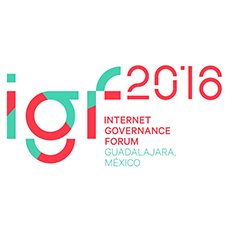Open forum: IEEE
6 Dec 2016 13:00h - 14:00h
Event report
[Read more session reports and live updates from the 11th Internet Governance Forum]
In his opening statement, moderator of the event Mr Oleg Logvinov, CEO at ‘IoTecha’ pointed out that the IEEE’s Internet Initiative recognises many layers of connectivity: the physical layers of connectivity that enable us to connect, and the framework that allows us to be connected. The IEEE is especially working on connectivity among different camps, policymakers, and technology developers. He reminded us that in most cases, policies enable or disable technology proliferation. He then invited the panellists, who are also members of the Internet Initiative, to reflect on discussions, events, and developments, throughout the year related to these issues. The problems are similar and local discussions and solutions can bring some more insights to practical solutions to move forward.
Mr Christopher Jannuzzi, Executive Director of the IEEE, and a technical lead at the IEEE Internet Initiative, noted that the IEEE with its 40 societies, each of them with a different technical focus, is the right group to inform policymakers and vice versa so technical experts can understand the policy implications related to IoT. Among important developments he noted the launch of the Global Connect Initiative in partnership with the US state department, the White House office of technology, the ITU, the World Bank, and others. The initiative is aiming to connect 1.5 billion more people to the Internet by 2020. As an example of the IEEE’s work on supporting local initiatives, he pointed out the support on an ambitious plan from a couple of Tunisian students to connect all the schools in the country by 2020.
Dr Min Jiang, an associate professor of communication studies at UNC Charlotte, as a researcher in the field of Chinese Internet and technology use, gave an overview of China’s Internet users’ perspective. Since 1995, Chinese Internet use has risen to one billion people with the advent of mobile access. China has become a powerhouse, both economy and technology wise. The way of thinking has changed as has the notion of what the Internet should represent. In her words, China is now addressing more issues of information sovereignty and facing more centralised approaches in Internet-related policies. Also there is a lack of notion of privacy and the importance of privacy. These issues are not properly addressed in IoT discussions either.
Ms Limor Shmerling Magazanik, Director of the Israeli Law, Information and Technology Authority, shared experience in the field of privacy protection and policy enforcement. She mentioned the successful work in implementation of the Israeli system for biometric data. That project brought together experts from different fields to work on the issue. The levels of privacy and data protection were measured in the right environment and gave the best results. She added that privacy by design is a must in order to gain users’ trust. Users needs to know from the start what will happen with their data. ‘Privacy by design is meant to be part of the process where we bring together the people who make the design, the people who make the policy, and we try to think about how to actually implement policy inside the product.’ Also, Magazanik added that opting in and opting out decision needs to be specific.
Mr Juan Gonzalez, Senior Strategist Office of the Chief Technology Office Cyber Security and Communications US Department of Homeland Security, emphasised the need of developing balanced policies. The DHS encourages the multistakeholder model and is also working with other private sector entities, other stakeholders, departments, and agencies. It encourages the ecosystem of safe solutions. He also pointed to work on increasing consumer education noting that the IoT is a huge area to look into to embed security practices. He added the department’s work on a more standardised network management platform. The DHS has released the ‘Strategic Principles for Securing the Internet of Things’ document, available now.
Mr Ning Kong, Director of International Department, China Internet Network Information Center in charge for the national registry, shared an idea of co-operated effort across the nations, across institutions, to share our resources in order to stop massive DDoS attacks. He pointed out the importance of multilingualism and internationalised domain names, and e-mail services, adding that certain levels of standards should be developed and implemented into the IoT devices.
Mr Osama Manzar, founder of the Digital Empowerment Foundation in India, shared his experience in connecting the most remote parts of the world. It is striking that India, even as the second biggest Internet penetration country with 400 million people connected is also the second biggest unconnected country in a world with a remaining 700 million inhabitants without Internet access. In the case of India, digital inclusion can be a case of massive digital exclusion. He mentioned the case of biometric data (fingertips) in India which is used for the food rations; anyone whose biometric data does not match is not entitled to the month’s wages or ration. This inclusive policy created a situation where 500 million people cannot benefit from a free meal. For the most underdevelopment areas, he mentioned the creation of wireless mesh networks as a success in the implementation of low-tech solutions. As one way forward, he proposed that the IEEE work on demystifying technology in order for it to become household-level use. If people use it, we will now how to manage it.
In a follow-up discussion, the importance of clearly interpreted regulations was mentioned. Regulations can, and should be drafted with input from society. All panellists emphasised the importance of multistakeholder forums (like the IGF) in order to overcome silos. Of course, communication across sectors is never easy.
by Arvin Kamberi
Related topics
Related event

